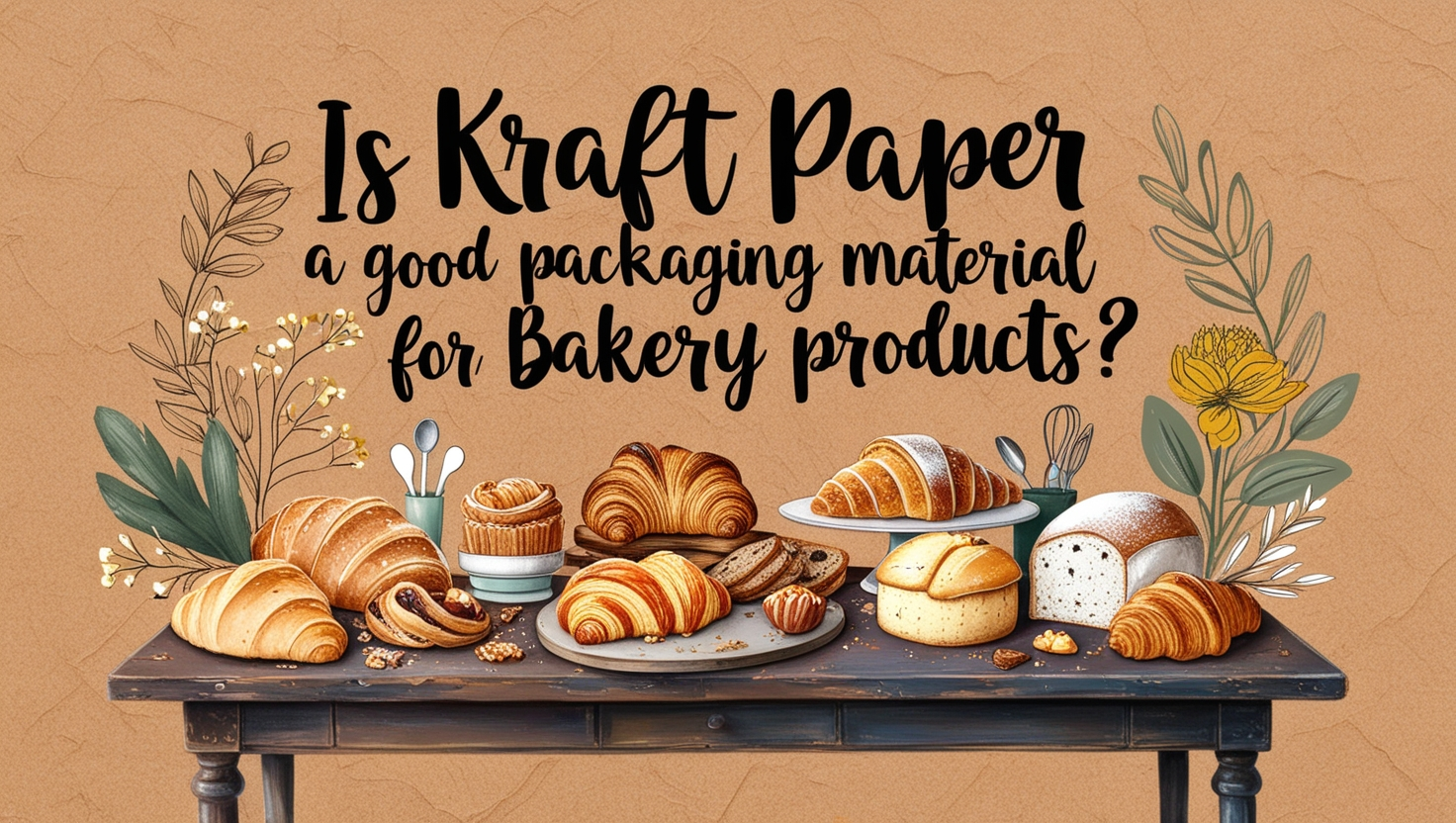Is Kraft Paper a Good Packaging Material for Bakery Products?
02 November 2024 | 3 min read

Kraft paper has become a popular choice for various packaging needs, including in the food industry. But is it suitable for bakery products? Let’s explore the advantages and potential limitations of using Kraft paper for packaging baked goods.
Advantages of Using Kraft Paper for Bakery Products
Eco-Friendly and Sustainable
Kraft paper is biodegradable and recyclable, hence considered an environmentally friendly packaging option for baked products. This responds to the increasing demand by consumers for eco-friendly packaging formats.
Breathability
Kraft paper allows airflow inside because of its porous nature, which can only help bakery items such as bread, pastry, and cookies stay fresh. This is because accumulation of moisture might get them soggy or moldy.
Natural Aesthetic
The natural, earthy look of Kraft paper appeals to consumers who would wish for uncomplicated and simple eco-friendly packaging. It enhances artisanal and handcrafted bakery items in terms of presentation to buyers.
Customizable
Not only can Kraft paper be very simply printed with brands, logos, and other designs, but it also opens several avenues for bespoke packaging of bakeries to express the actual meaning of their brand identity.
Cost-Effective
Kraft paper is economically quite reasonable compared to the various other materials availed as options in packaging, hence an affordable investment for most bakeries, let alone small or artisan ones.
Potential Limitations of Kraft Paper for Bakery Products
Moisture Resistance
One of the major weaknesses of Kraft paper is its rather limited moisture resistance. It does provide some level of protection from moisture, but when it comes to oily or highly moist items, this is not really the best form of packaging. Kraft tends to absorb grease and liquids, which may lead to stains or an overall soggy appearance.
Short Shelf Life for Certain Items
If the merchandise has a longer shelf-life or shall remain fresh over a longer period of time, then Kraft paper just cannot serve the purpose appropriately. For such products, Kraft paper combined with a moisture-resistant liner, possibly even additional protection, is required.
Limited Barrier Protection
Kraft paper itself allows little protection from the environment-air and light, for instance-which may act on the freshness of bakery products. In products sensitive to these agents, extra packaging layers might be necessary.
Best Uses of Kraft Paper in Bakery Packaging
Bread Bags:
Kraft paper is ideal for packaging bread, as it allows the bread to breathe, helping to maintain its crusty texture.
Pastry Wraps:
For dry pastries and cookies, Kraft paper can be a great wrapping material, especially when combined with a wax or parchment liner.
Box Liners:
Kraft paper can be used as a liner for bakery boxes, adding a layer of protection while contributing to an eco-friendly image.
Conclusion:
Versatile, yet Considerate: Kraft paper can be one of the best packaging options for baked goods, especially for those that do well under breathability and a nature-inspired look. However, one must also think about the certain needs of the products being packaged. Items that need some sort of moisture resistance and longer-term freshness may need additional protective measures added. Overall, Kraft paper stands as a versatile, ecological choice that, with prudent use, works for a lot of bakery applications.